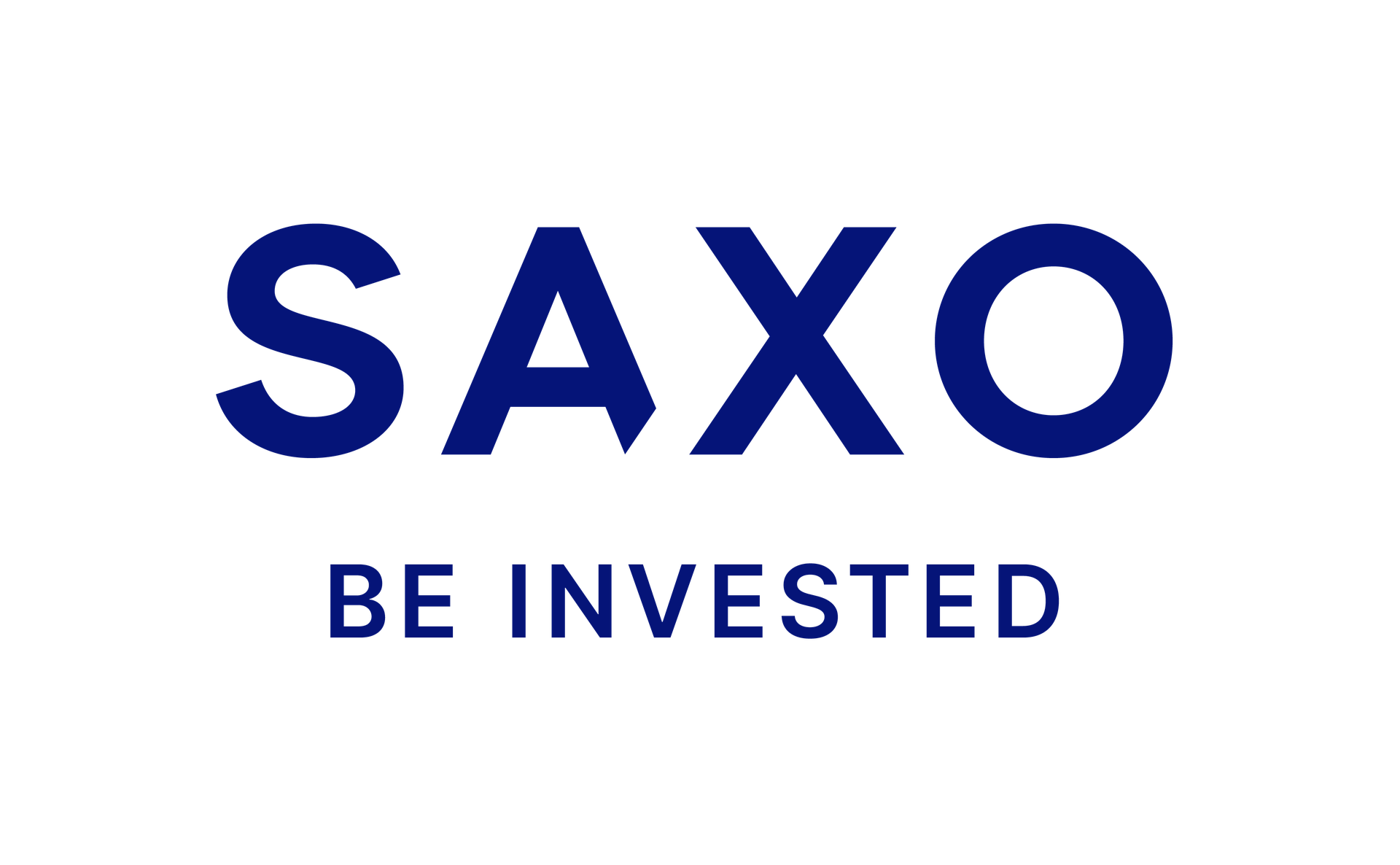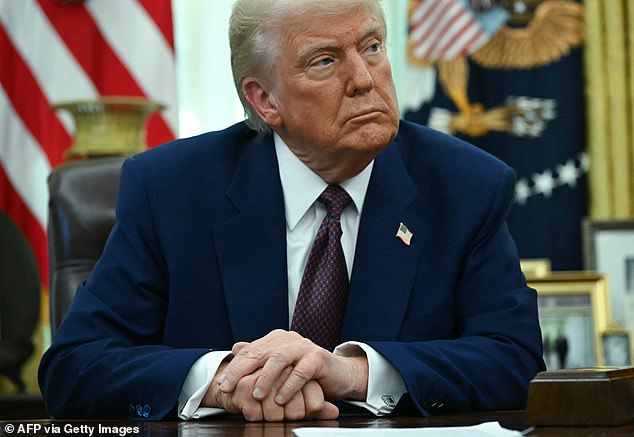It is called a correction. That is what has happened to high-tech shares in America, with the Nasdaq index falling 10 per cent from its peak last week.
The expression is simply the popular term for that degree of decline, just as ‘bear market’ describes a 20 per cent fall.
But the word’s more general meaning – as in correcting a mistake – applies to what is happening to this new, extraordinary administration in America.
There is a pattern. Donald Trump announces tariffs. The markets plunge. The Donald retreats.
We are starting to see what will contain the new President’s power: the brutal judgment of the financial markets.
Back in November when he won the election, the widespread market assumption was it would be bad for bonds and good for equities – particularly the high-tech companies whose leaders were clustering round him.

Being judged: We are starting to see what will contain Donald Trump’s power
For a while that seemed true. The ten-year Treasury note yield hit 4.8 per cent in January and the S&P 500 index reached an all-time high of 6,147 last month.
The share prices of the Magnificent Seven soared, with three of the tech giants – Apple, Microsoft and Nvidia – all becoming worth more than $3 trillion (£2.3 trillion).
But now bond yields and the S&P500 are back where they were in early November, and only Apple’s value remains above $3 trillion.
Tesla’s shares have fallen fastest, down 40 per cent from their peak in December. Riding shotgun on Trump’s wagon may have been exhilarating for its boss Elon Musk, but it has not been a bundle of fun for his car company’s shareholders.
So what happens next? Shares never move in straight lines and there will always be people who buy in the dips.
But US equities remain close to the top end of their historic valuations, and given the mounting evidence of a slowdown in the US economy, they are vulnerable.
The Federal Reserve Bank of Atlanta has a model that suggests the economy will shrink by 2 to 3 per cent in the first quarter.
To be clear, the fall in share prices is not all due to Trump’s tariffs, the sacking of Federal workers and so on.
After any long bull market there was always likely to be a pull-back. But some of what is happening is a reaction to what he is doing.
It is too early to be calling a bear market for shares, but it is worth looking at how the markets will try to contain him.
For a start, we are going to see more resistance to tariffs. That is already happening.
As far as inflation is concerned, it’s an easy argument. Imports of goods constitute 10 per cent of gross domestic product, so if on average they go up by 10 per cent because of the tariffs, that’s one percentage point added to inflation. Not popular.
If unemployment starts to climb, that would be even worse.
The big question is what might happen were there to be a bear market in equities – if this correction on Nasdaq develops into something much more serious.
Or what would happen if the dollar plunged? It is off a bit, with the pound back to $1.29, but nothing serious as yet. Or if long-term interest rates shot up?
This is all some way off, and it may not be necessary, but I could see concerned action by the titans of Wall Street to combine with the Fed and the Treasury to support the markets.
It has happened before, most recently in the great financial crisis of 2008-9, and it could happen again. And if this crisis of confidence were the result of the administration’s policies, those policies would have to change.
And for us here? On any long view, investing in US equities makes money.
The latest Global Investment Returns Yearbook from Swiss bank UBS was out last week. It goes back to 1900. For America the cumulative annual real return on equities has been 6.6 per cent, whereas for bonds it was 1.6 per cent.
For the UK the numbers are 5.4 per cent and 1.4 per cent. You have to be in equities and you’d be wise to have a good chunk of your savings in America.
But maybe it’s worth waiting a while to see how Big Money will sort out the mercurial President.
DIY INVESTING PLATFORMS

AJ Bell

AJ Bell
Easy investing and ready-made portfolios

Hargreaves Lansdown

Hargreaves Lansdown
Free fund dealing and investment ideas

interactive investor

interactive investor
Flat-fee investing from £4.99 per month

Saxo

Saxo
Get £200 back in trading fees
Trading 212
Trading 212
Free dealing and no account fee
Affiliate links: If you take out a product This is Money may earn a commission. These deals are chosen by our editorial team, as we think they are worth highlighting. This does not affect our editorial independence.
This article was originally published by a www.dailymail.co.uk . Read the Original article here. .


